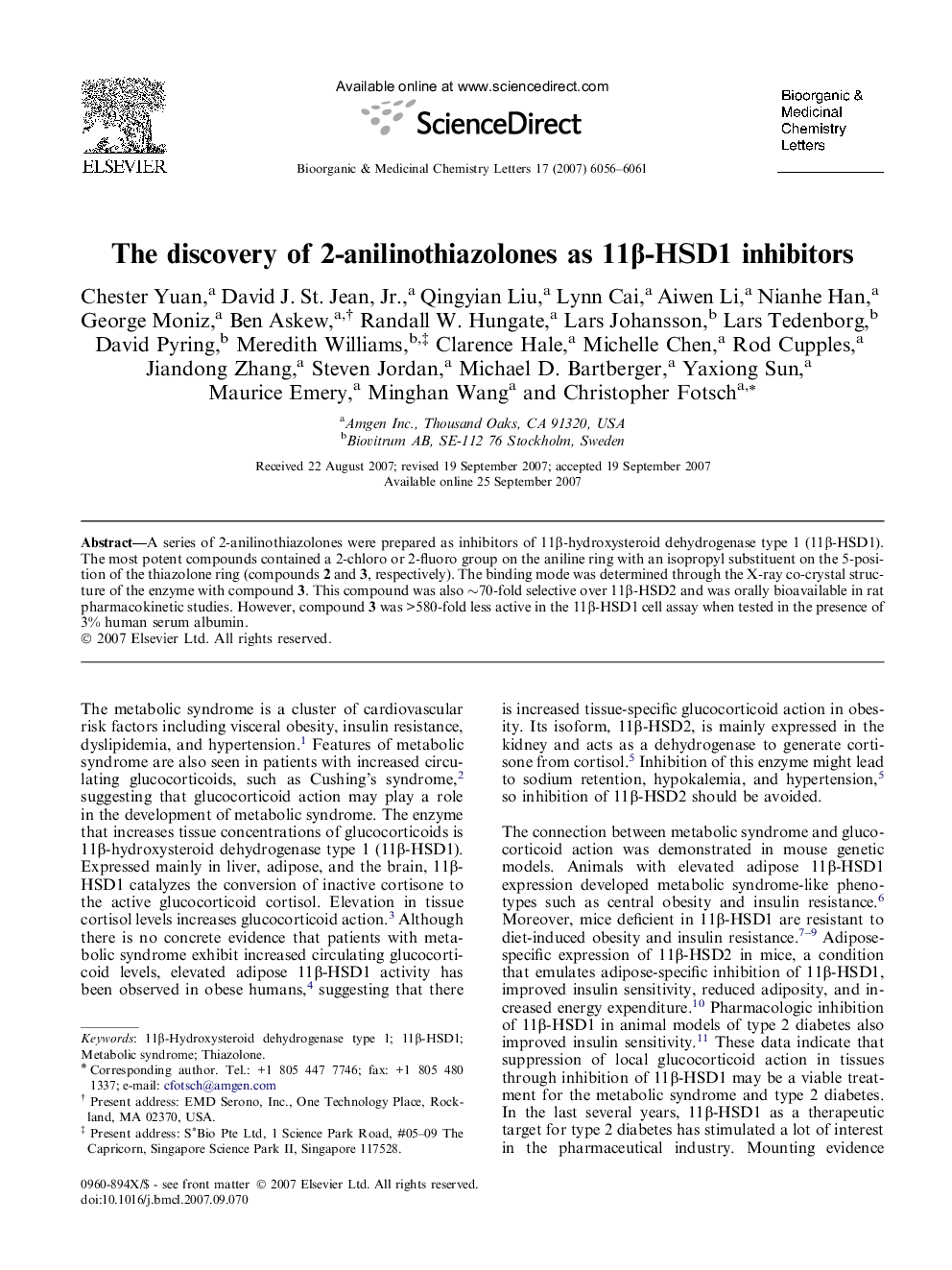| Article ID | Journal | Published Year | Pages | File Type |
|---|---|---|---|---|
| 1373195 | Bioorganic & Medicinal Chemistry Letters | 2007 | 6 Pages |
Abstract
A series of 2-anilinothiazolones were prepared as inhibitors of 11β-hydroxysteroid dehydrogenase type 1 (11β-HSD1). The most potent compounds contained a 2-chloro or 2-fluoro group on the aniline ring with an isopropyl substituent on the 5-position of the thiazolone ring (compounds 2 and 3, respectively). The binding mode was determined through the X-ray co-crystal structure of the enzyme with compound 3. This compound was also ∼70-fold selective over 11β-HSD2 and was orally bioavailable in rat pharmacokinetic studies. However, compound 3 was >580-fold less active in the 11β-HSD1 cell assay when tested in the presence of 3% human serum albumin.
Graphical abstractFigure optionsDownload full-size imageDownload as PowerPoint slide
Related Topics
Physical Sciences and Engineering
Chemistry
Organic Chemistry
Authors
Chester Yuan, David J. St. Jean Jr., Qingyian Liu, Lynn Cai, Aiwen Li, Nianhe Han, George Moniz, Ben Askew, Randall W. Hungate, Lars Johansson, Lars Tedenborg, David Pyring, Meredith Williams, Clarence Hale, Michelle Chen, Rod Cupples, Jiandong Zhang,
